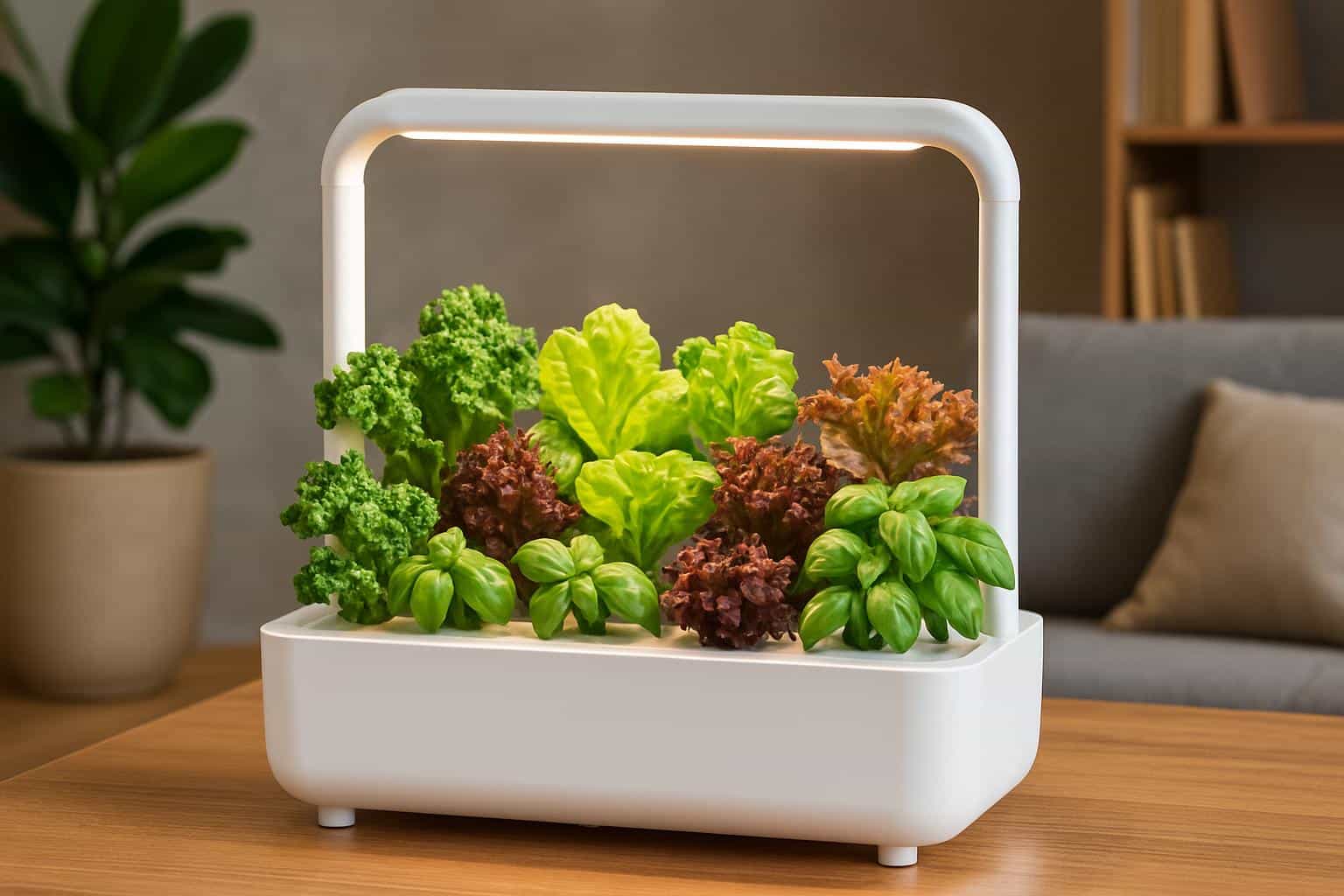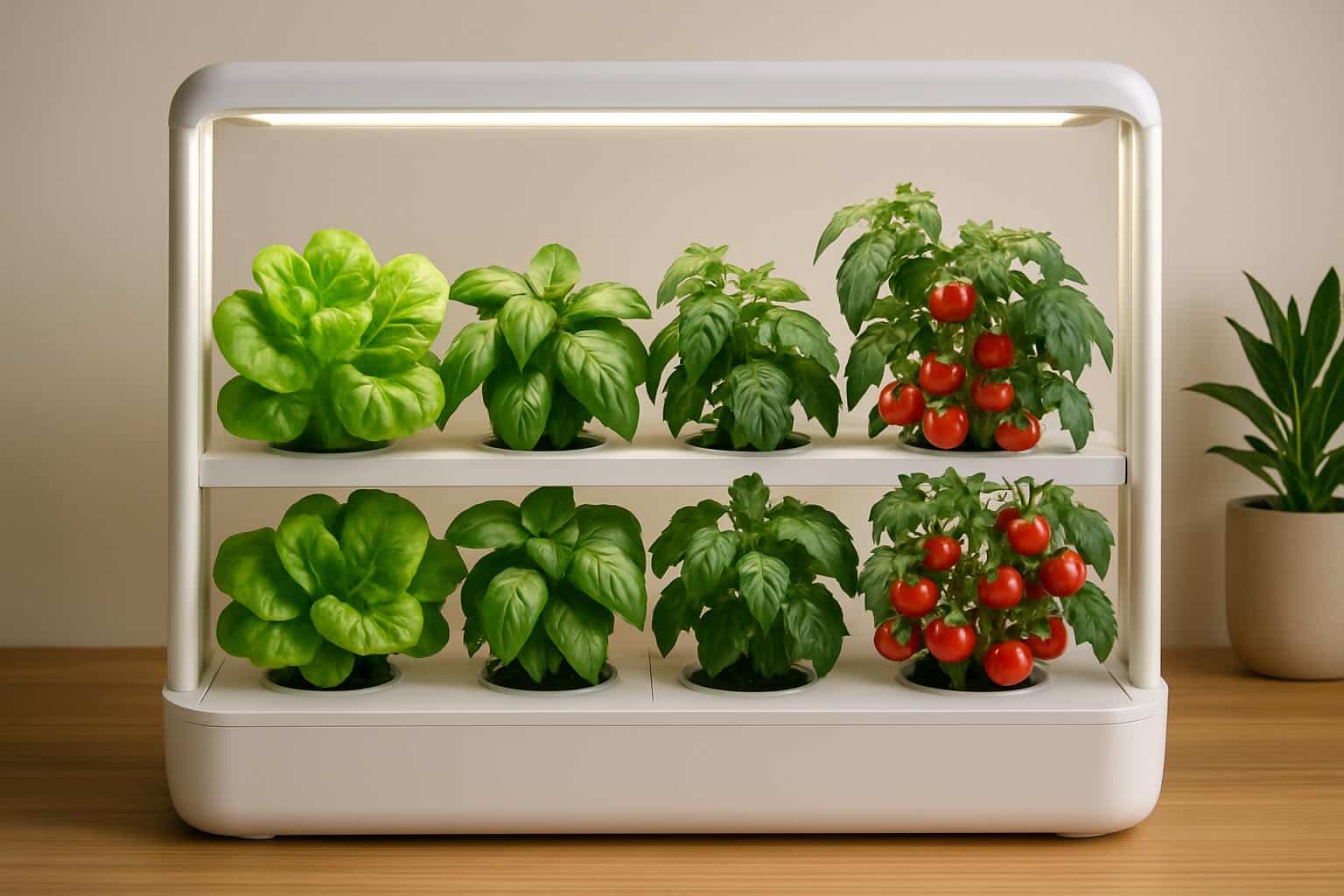If you’ve ever dreamed of picking lettuce, basil or cherry tomatoes from your very own garden but don’t have a backyard, a new generation of tech is making it possible to grow produce inside with minimal hassle. Its small footprint and ability to manage up to sixteen plants simultaneously means that the system takes care of delivering light, water, and nutrients on its own, so anyone new or strapped for time in the kitchen can grow inside with ease. Here’s how it works — and what you should know about yield, maintenance and expense.
How the 16-Plant Smart Garden System Works Indoors
The unit is, at heart, simply another vertical, closed-loop hydroponic system. A silent pump pushes water and nutrients from the bottom reservoir through plant modules, bathing roots in an oxygen-rich solution. With no soil to muddy the water (so to speak), the system stays clean, and growth is rapid — controlled environment studies from NASA and UofA’s Controlled Environment Agriculture Center have repeatedly demonstrated hydroponics can use anywhere from 90–95% less water than conventional gardening, while also speeding up grow cycles.
- How the 16-Plant Smart Garden System Works Indoors
- From Box to First Sprouts in Minutes: Simple Setup
- Camera and AI Features That Actually Help Daily Care
- What You Can Grow, and How Quickly, in This Smart Garden
- Water, Energy, and Recurring Costs to Expect Monthly
- Maintenance and Best Practices for Healthy Indoor Growth
- The Bottom Line: A Practical Path to Fresh Indoor Produce

It has a small footprint — about one and a half square feet — so it fits beside a bookshelf or in the corner of your kitchen. Its full-spectrum LEDs replicate natural sunlight, and a built-in controller adjusts intensity and schedule automatically to match leafy greens, herbs and fruiting crops. Closed channels and smooth, rounded corners mean water cleans the basin so you don’t have to.
From Box to First Sprouts in Minutes: Simple Setup
Assembly is simple: snap together the frame, attach the light bar and fill the reservoir with tap water. The companion app guides you through the priming of the pump and the setting of a light schedule. Pre-seeded pods fall into the sixteen ports, each marked with best placement by height and light needs (so basil doesn’t overshade lettuce; heat-loving peppers secure prime spots higher up).
Each kit comes with a nutrient mix. But rather than guessing, the app does volumetric-based dosing — no pH strips or lab gear necessary.
- Greens, like lettuce or arugula: 3 to 7 days
- Herbs: 7 to 14 days
- Fruiting plants: 10 to 21 days
- Keep the trays out of direct sunlight and wait.
Early thinning and light pruning also increase airflow while preventing tip burn, a common problem for tight indoor gardens.
Camera and AI Features That Actually Help Daily Care
Rather than rely on a timer-based approach, this model is fitted out with an ultrawide camera and computer vision to check in on your plants every day. The camera identifies each pod’s ID and location, monitors leaf growth and flags problems such as chlorosis (yellowing), edema or early signs of pests. An algorithm, trained with horticultural best practices and nutrient uptake curves, customizes advice: dim the lights to relieve heat stress, remind you to elevate the canopy or stagger harvests to maintain equilibrium in the system.
Optional sensors measure water level, temperature and electrical conductivity to catch problems before they spiral. Alerts present themselves as little jobs: add two capfuls of nutrients, top up water or “harvest outer leaves today.” It’s the next best thing to having a greenhouse tech on call — and it can actually be handy if you’re multitasking work and dinner.
What You Can Grow, and How Quickly, in This Smart Garden
Most users, with sixteen slots, sow some fast greens and slower herbs: four lettuces, say; four arugula or kale; four herbs (basil, cilantro, dill — the pods are labeled “coriander,” oddly enough); and four “specialty” pods like dwarf tomatoes or mini peppers. Under controlled conditions, leaf crops typically go to first harvest in 25 to 35 days; herbs usually reach snipping size in four to six weeks but continue producing for months. Fruiting crops take longer — 8 to 10 weeks for the earliest ripe tomatoes — but have a bigger payoff.

Yield depends on variety, but a well-tended sixteen-plant garden can provide several salads a week and a constant supply of herbs. That meshes with research conducted by Cornell’s Controlled Environment Agriculture program showing that high-density, continuous-harvest approaches can yield regular, small outputs that accumulate over time.
Water, Energy, and Recurring Costs to Expect Monthly
Normally the reservoir contains 2 to 3 gallons. You’ll recharge weekly at the top, with a complete change-out every 2 to 4 weeks, depending on crop load. And because the system is recirculating, water use remains relatively low when compared with soil grow bags or outdoor beds.
LEDs within this category consume 60–90 watts. That would come out to approximately 29–43 kWh per month with 16 hours of light per day. At the U.S. Energy Information Administration’s most recent residential average, that’s somewhere around $5 to $8 in electricity per month. Seed pods and nutrient solution costs are modest, just a few dollars for seed pods (STC’s cost $4 per pod), and just a few cents per plant per week for nutrients. Some also offer optional subscriptions that include seed credits, AI features and replacement filters or pods — it’s a convenient feature but strictly unnecessary.
Maintenance and Best Practices for Healthy Indoor Growth
It’s a five-minute-a-week kind of thing: topping up water, supplementing nutrients as advised, wiping the camera lens and pruning away overachievers. Cleaning the reservoir, sanitizing channels and checking the pump once a month will prevent biofilm. Rotate pods to prevent shading out, harvest outer leaves first and show restraint with the feeding — tip burn is more often a nutrient or airflow issue than a light one.
If you’re new to indoor growing, choose those that are forgiving, such as butterhead lettuce, kale and parsley. Save tomatoes and peppers for when you’ve experienced your space’s microclimate. The National Gardening Association has reported that tens of millions of households now grow edibles at home; matching that enthusiasm with a data-aware, guided system eliminates many sources of friction.
The Bottom Line: A Practical Path to Fresh Indoor Produce
A 16-plant smart garden transforms a strip of floor space into a steady supply of greens and herbs, and does so with tech that’s more than just blinking status lights.
With water savings, predictable growth and app-based guidance, it’s a pragmatic route to fresher meals — plus an excellent way to get an education in modern, sustainable growing without leaving the house.

